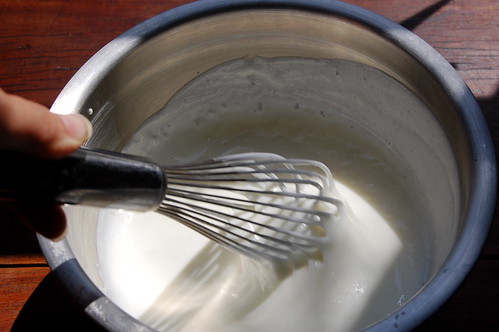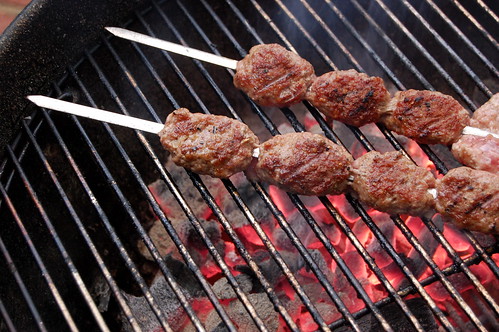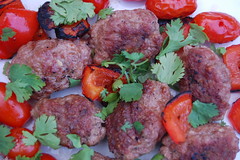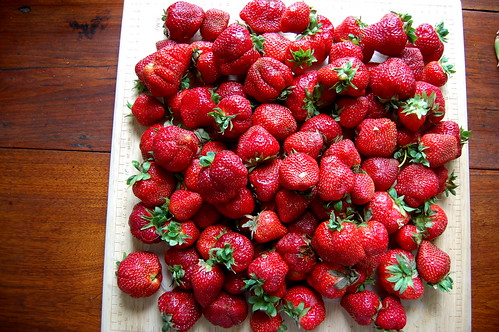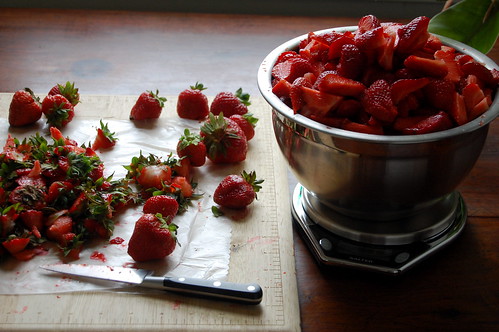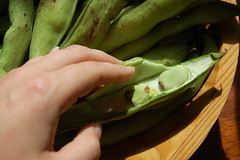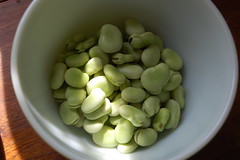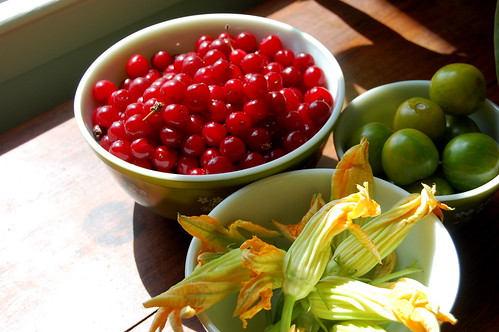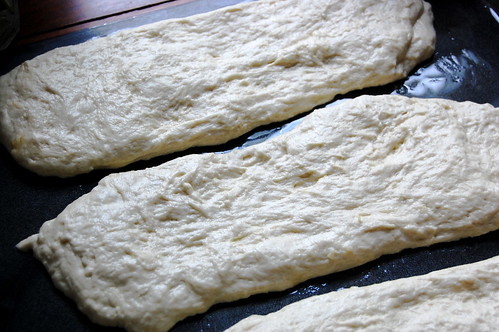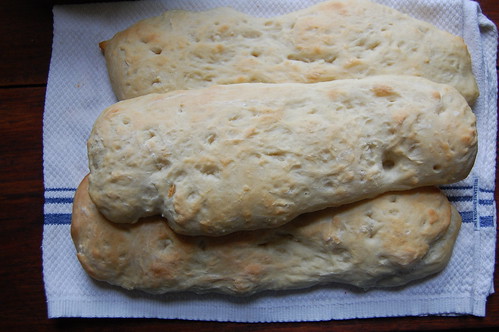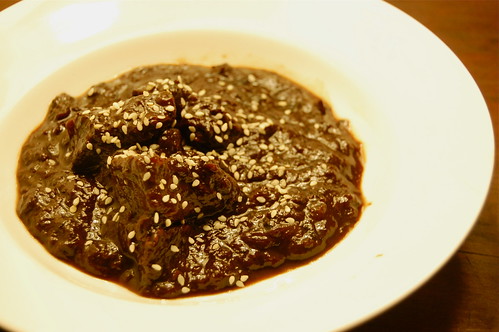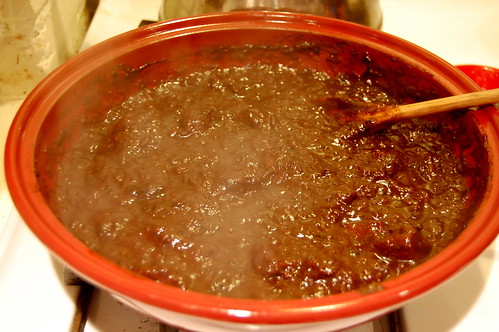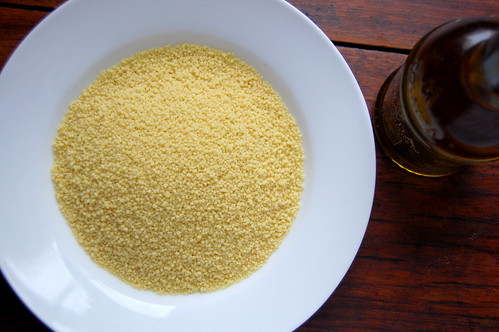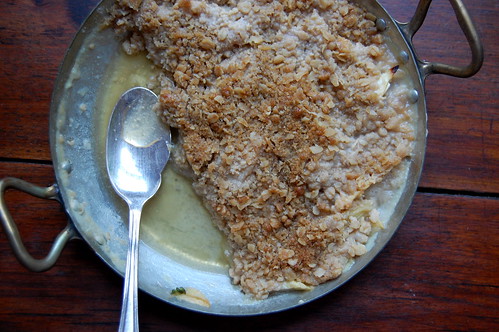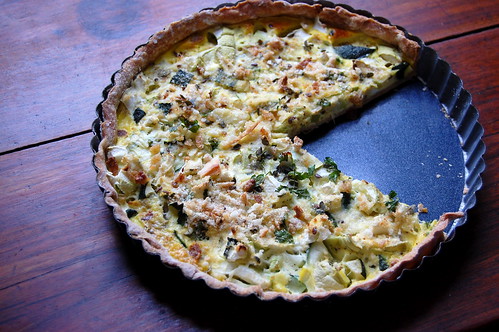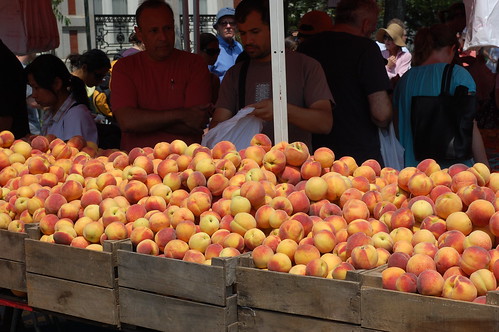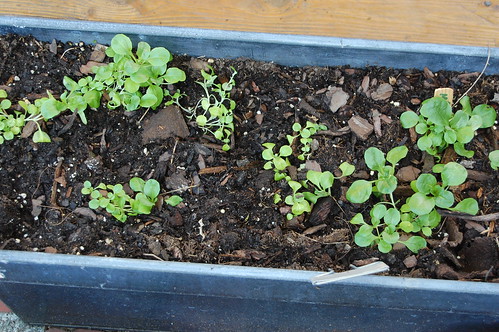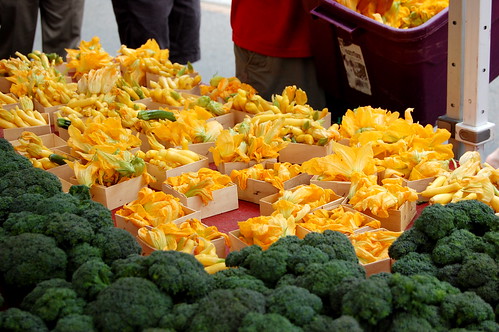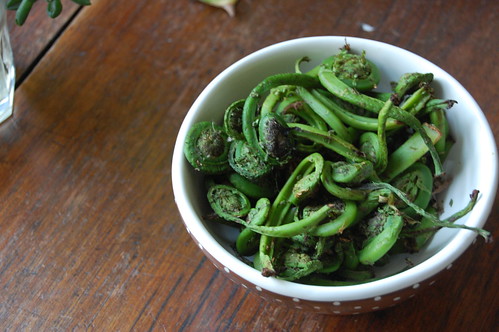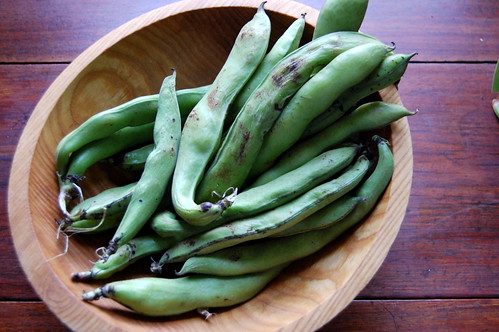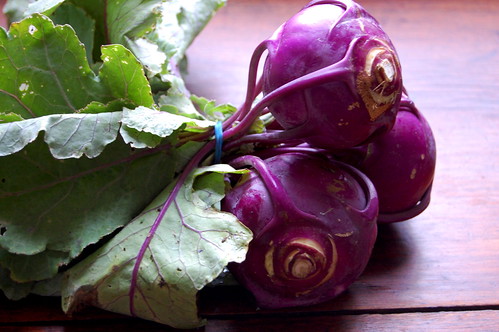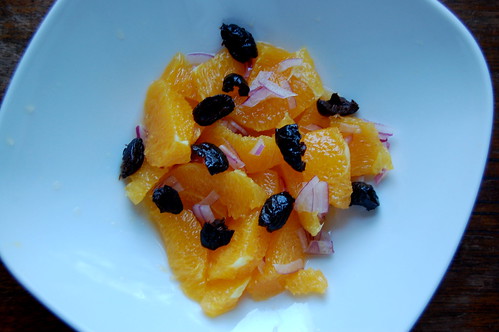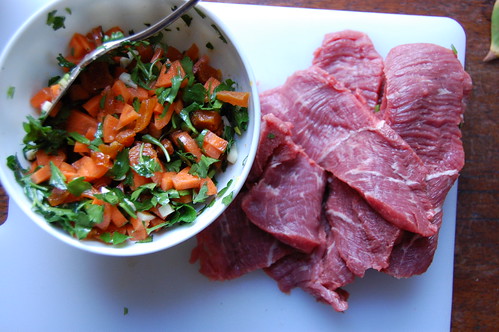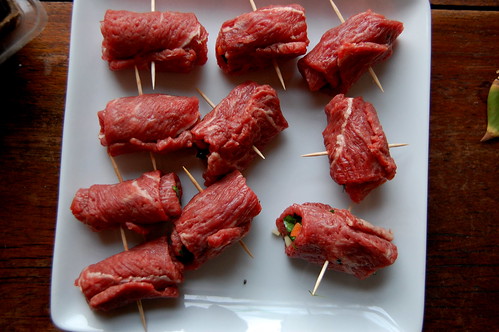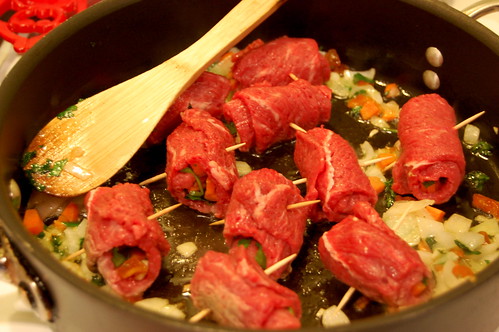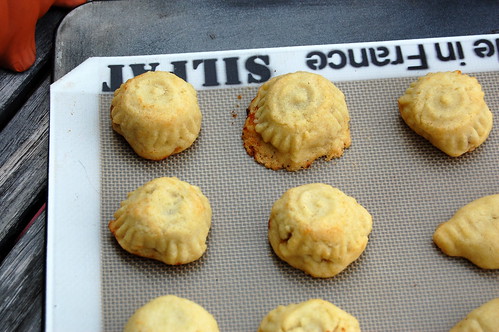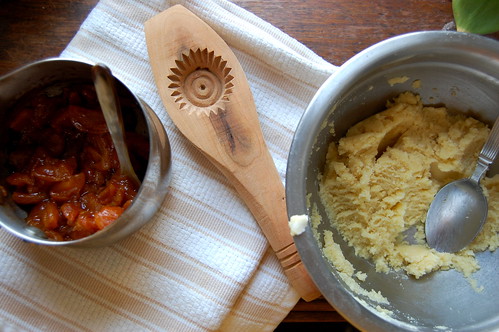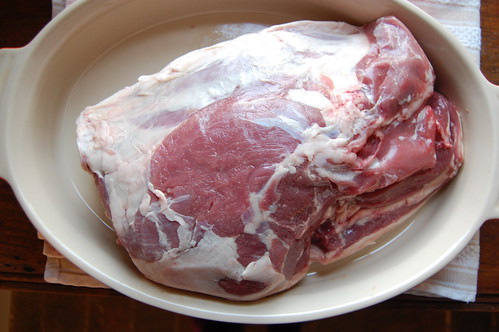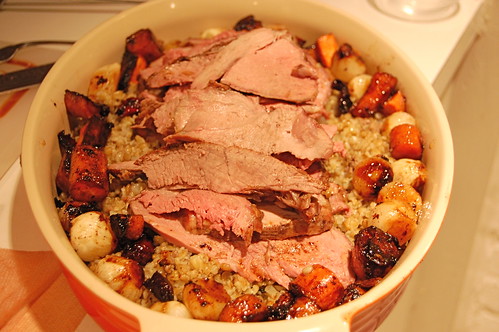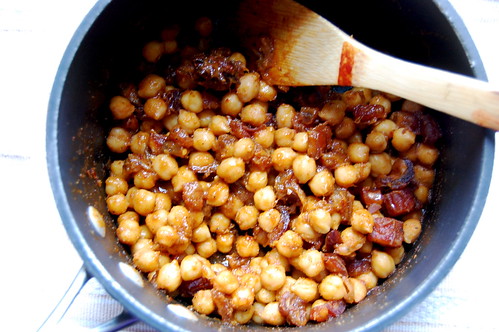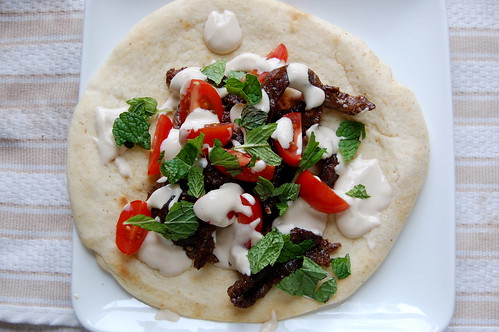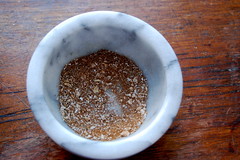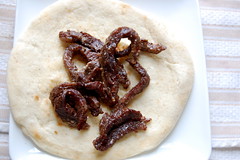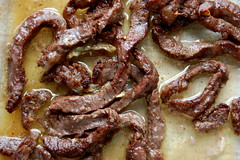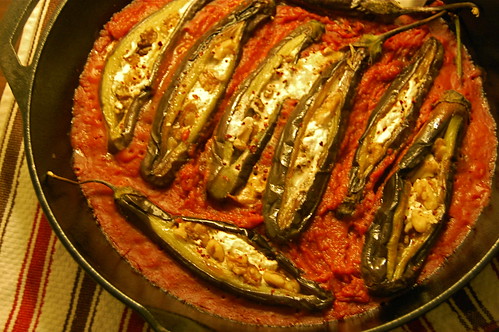
(We are currently traveling, and apparently in a country that randomly blocks blogging sites. It took me awhile, but I eventually figured out why I couldn't access anything. I've got a work around for the time being, here's hoping it continues to work. Cheers to free speech everyone!)
I couldn't resist buying these eggplants the other day, they were so firm and slender and fresh looking. But then I came home and got busy, and realized that most of the things I'd do with them- making stuffed eggplants with rice and meat, or makdous, or fettat makdous, were all pretty labor intensive, and I was quite a bit lazy.

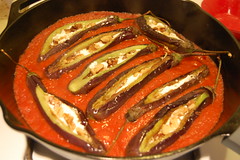
So instead, inspired by the most popular of Lebanese bloggers, I made this simplified version. First, you fry the eggplants lightly in olive oil until their outsides are well seared. Then you saute a diced onion in the same pan. While the onion is softening you slit the eggplants and stuff them with a mixture of seasoned goat cheese and walnuts. You add tomatoes to the pan, making a simple tomato sauce, and then you nestle the eggplants in the pan, cover and cook until done.
It sounds like it has quite a few steps, but really all you need is one cutting board, one bowl, and one pan to do this whole thing. Plus it's a one dish meal, some rice or bread and you're good to go.
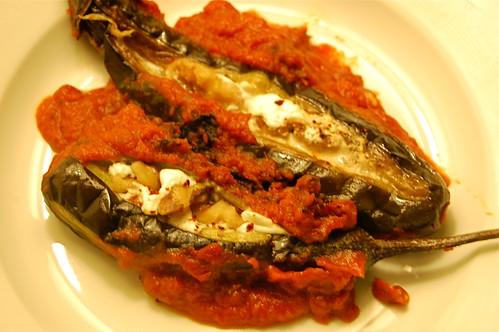
Eggplants Stuffed with Cheese and Walnuts
6-12 small slim eggplants, peeled in stripes
6 oz goat cheese
1/2 cup walnut pieces
1 pinch each cumin and cinnamon
1 small onion, diced
3 cups chopped tomatoes (fresh or canned)
1 small garlic clove, sliced
salt, black pepper, olive oil
1.Mix together the goat cheese, walnuts, cumin, cinnamon, and black pepper in a bowl.
2. In a large wide sauce pan, heat a generous amount of olive oil (around 1/2 to 1 cup). Saute the eggplants until browned on all sides - they will not be cooked all the way through. Remove the eggplants to paper towels.
3. Add the onion to the pan with the remaining oil and saute until softened and translucent. Add the tomatoes and sliced garlic to the pan and season with salt. Bring tomatoes to a simmer.
4. Meanwhile, cut a slit lengthwise down each eggplant. Stuff each eggplant with the goat cheese mixture.
5. When the tomatoes are no longer watery, nestle the eggplants in the tomato mixture, with the slit facing up so the stuffing does not spill out. Cover the pan and simmer over low heat for about 20 minutes. Check on the pan occasionally to make sure the tomato sauce does not become too dry. The dish is done when the eggplants are tender all the way through. Season again with salt and pepper.



